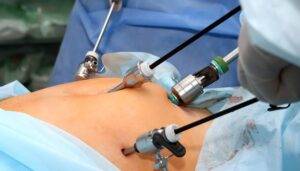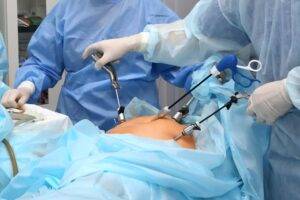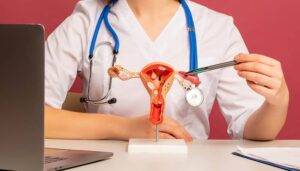The menstrual cycle is a physiological and necessary process for all women’s reproduction. Yet, despite its importance, women do not know very much about what their cycle is, or why and how much knowing that cycle is important to overall health. In this article, we’ll explore the phases of the menstrual cycle, what happens in your body during each phase, and how tracking your cycle can benefit your health.
What Is the Menstrual Cycle?
A sequence of the changes that a woman’s body undergoes every month to become pregnant is known as the menstrual cycle. The cycle is on average 28 days, but it has been noted and confirmed to range from 21 – 35 days in adults and to last longer in adolescents. It runs from the beginning of the menstrual cycle to the eve of the next menstrual period.
Knowing when the cycle occurs is the first step to reproductive health management, detecting anomalies, and improving fertility awareness.
The Four Phases of the Menstrual Cycle
The menstrual cycle is composed of four separate phases, each of which is critical to reproductive health:
-
1. Menstrual Phase (Day 1–5): This stage commences from day one of your menstrual flow when the lining of the uterus is exfoliated. The bleeding typically lasts between 3 to 7 days. During this time, your body is discarding the unfertilized egg and the uterine lining.
- Common symptoms: Cramps, fatigue, bloating, and mood swings.
- Tips for care: Drink lots of water, consume iron-containing foods and light exercise or yoga may provide relief from cramps.
-
2. Follicular Phase (Day 1–13): The follicular phase coincides with the menstrual phase, however it goes further beyond. In this stage, the pituitary gland secretes a factor, follicle-stimulating hormone (FSH), which stimulates the follicle genesis in the ovaries. One of these follicles will mature into an egg.
- Hormonal activity: Estrogen level increases and makes the inner lining of the uterine thicker, preparing it for potential pregnancy.
- Health focus: Focus on nutrient-dense foods and stress management to achieve hormonal equilibrium.
-
3. Ovulation Phase (Day 14): Ovulation occurs around the midpoint of your cycle. The fully mature egg is extracted from the ovary and moves down the fallopian tube, where it can be fertilized by the sperm.
- Signs of ovulation: A slight rise in basal body temperature, changes in cervical mucus (clear and stretchy), and mild pelvic pain.
- Fertility window: This is the most plumper point of the cycle, lasting nearly 24-48 hours.
-
4. Luteal Phase (Day 15–28): Following ovulation, the ruptured follicle is transformed into the corpus luteum that releases progesterone. This hormone prepares the uterus for a potential pregnancy. If fertilization doesn’t occur, progesterone levels drop, triggering menstruation.
- Possible symptoms: Menorrhagia with some breast tenderness, mood swings, and bloating caused by premenstrual syndrome (PMS).
- Self-care tips: Practice relaxation skills, follow the principles of a healthy diet, and exercise on a regular basis.
Why Is Tracking Your Menstrual Cycle Important?
- Identify Irregularities: Tracking your cycle can help you detect any abnormalities, such as amenorrhea, unusually heavy menstrual bleeding, or irregular cycle length. These may reflect underlying medical conditions (e.g., polycystic ovary syndrome [PCOS] or thyroid disorders).
- Manage Symptoms: Knowing when to expect PMS symptoms can help you prepare and manage them effectively.
- Plan for Pregnancy or Contraception: To achieve family planning (intention to conceive or to not conceive in the context of your fertility), identification of your fertile window is a key step.
- Monitor Overall Health: The menstrual cycle has marked as a significant biomedical sign of the states in a person's overall health. Meaningful fluctuations in your flow cycle can often suggest stress, nutritional deficiencies, or other medical issues.
Tips for Maintaining a Healthy Menstrual Cycle
- Eat a Balanced Diet: Enrich foods with iron, calcium, and omega-3 fatty acids for hormonal support and easing menstrual pain.
- Exercise Regularly: Moderate exercise can thus relieve cramps, decrease the symptoms of PMS, and improve mood.
- Stay Hydrated: Keeping hydrated can reduce bloating and contribute to overall wellness throughout your cycle.
- Reduce Stress: Chronic stress can disrupt your cycle. Practice mindfulness, meditation, or yoga to manage stress.
- Consult a Doctor When Necessary: If you experience severe pain, heavy bleeding, or irregular cycles, seek medical advice to rule out underlying issues.
Tools to Help You Track Your Cycle
There are numerous apps available, such as Clue, Flo, and Period Tracker, that make it easy to record your symptoms, predict ovulation, and understand your cycle better. Traditional approaches, such as using a calendar or a journal, are equally effective too.
Conclusion
Following your menstrual cycle is not only about fertility, it is a clue to your overall health. By learning to identify the indicators and trends of the cycle, you can regain control of your health, enhance your quality of life, and deal with any possible problems early.
Your menstrual cycle is a natural part of life—embrace it, understand it, and let it empower you!




